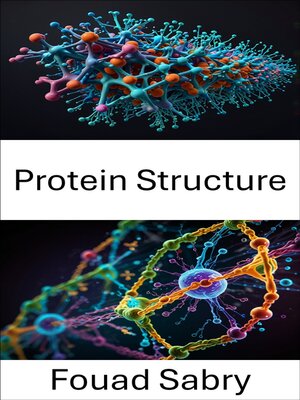Protein Structure
ebook ∣ Unveiling Molecular Dynamics and Interactions in Biological Macromolecules · Molecular Biophysics
By Fouad Sabry

Sign up to save your library
With an OverDrive account, you can save your favorite libraries for at-a-glance information about availability. Find out more about OverDrive accounts.
Find this title in Libby, the library reading app by OverDrive.



Search for a digital library with this title
Title found at these libraries:
| Library Name | Distance |
|---|---|
| Loading... |
Protein structure-Introduces the concept of protein structure, exploring how its threedimensional shape determines its function in biological systems
Alpha helix-Discusses the alpha helix, one of the most common secondary structures in proteins, emphasizing its importance in structural biology
Protein-Provides a thorough understanding of proteins, their role in cellular functions, and the structural diversity that allows them to perform a vast range of biological tasks
Protein biosynthesis-Focuses on the process of translating genetic information into functional proteins, detailing the mechanisms behind protein synthesis
Protein quaternary structure-Examines the quaternary structure of proteins, describing how multiple subunits come together to form functional complexes
Protein tertiary structure-Explores the threedimensional folding of proteins, including the forces that stabilize this structure and the role of molecular chaperones
Protein folding-Provides an indepth look at the process of protein folding, explaining the challenges and mechanisms involved in achieving functional conformations
Protein structure prediction-Discusses methods for predicting the structure of proteins based on their amino acid sequences, a key topic in structural bioinformatics
Structural bioinformatics-Introduces computational tools and techniques used to analyze protein structures and predict their functions, linking biology with informatics
Epitope-Focuses on the concept of epitopes, the specific regions on antigens recognized by antibodies, highlighting their significance in immunology
Levinthal's paradox-Discusses Levinthal's paradox, which illustrates the complexities and challenges in protein folding and how nature overcomes these challenges
Ramachandran plot-Explains the Ramachandran plot, a key tool used to visualize the possible conformations of polypeptide chains, helping to assess protein structures
Chaperonin-Describes chaperonins, special proteins that assist in the correct folding of other proteins, preventing misfolding and aggregation
Protein design-Explores the field of protein design, detailing strategies for designing synthetic proteins with specific functions, bridging biochemistry and engineering
Protein–protein interaction-Examines the interactions between proteins, essential for most cellular processes, and discusses techniques to study these interactions
Intrinsically disordered proteins-Investigates intrinsically disordered proteins, which lack a fixed structure and play unique roles in cellular regulation and signaling
Bacterial translation-Focuses on the translation process in bacteria, offering insights into the mechanisms of protein synthesis at the molecular level
Turn (biochemistry)-Explores turns in protein structures, key structural motifs that contribute to the overall protein fold and function
Molecular biophysics-Delves into the interdisciplinary field of molecular biophysics, which applies physical principles to understand protein structure and function
De novo protein structure prediction-Examines cuttingedge methods for predicting protein structures from scratch, without prior structural data
Protein domain-Explores the concept of protein domains, independent functional and structural units within proteins that contribute to their biological activity







